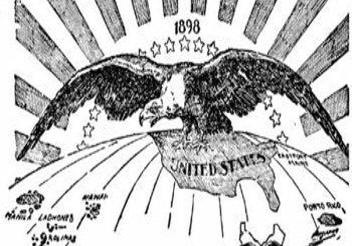
A closer look at the history of the Special Economic Zones (SEZs) reveals them to be a tool of the United States (U.S.) foreign policy. One that integrates non-capitalist spaces into the global economy for exploitation by capital. Bourne out of the US’ desire to reconfigure the economy of post-World War II Puerto Rico towards free markets, SEZs soon moved further afield, including Mexico in the late 1960s as the Maquiladora industry, and today number over 14,000 worldwide
By the 1970s the policy came into its own with the emergence of the “new international division of labour”. This new division, as political scientist William Robinson (2008) notes, allowed capital to move low-wage parts of manufacturing from the developing nations to the even cheaper developing world. This created a new set of social relations based on de-regulated and casual labour in a de-bounded networks of global commodity chains based on sub-contracting and outsourcing with SEZs as a core element. Facilitating a switch from domestic to foreign orientated development and the deep integration of the local, the vast majority but not all, into the global economy. Robinson continues that the developing world used its comparative advantage, low labour costs, to integrate. Leaving, he posits, labour in a highly precarious situation reliant on a highly unstable economy. While also negating the challenge, as posited by Mezzadra and Neilson (2013:84), from workers’ resistance in the developed world. Therefore, we can see the critical role of the SEZs: not just to facilitate capital but to contain labour unrest (Michalowski & Kramer 1987; Michalowski 2008).
Mezzadra and Neilson (2013:ch 7) explain in further detail how SEZs operate to construct new norms situated between the local and global, and the legal and illegal expanding and joining up various types of capitalism through financialisaton. According to Ong (2006), the legal regimes constructed within SEZs can be characterised as a state of exception. Normally this is when a government suspends law to deal with existential threat, such as terrorism, but SEZs invert this reality constructing a regime that allows certain people to take advantage of opportunities there. Corporate codes, including CSR, assist this process by redefining labour rights, under a facade of protection, while assisting in realising surplus value (Mezzadra & Neilson 2008:217). These codes emerged because the disjointed global chains that SEZs belong to are hard to “discipline” from the inside; hence they are supplemented from the outside (Tsang qtd in Ibid. 228). Ultimately, Ong (2006:137) notes, SEZs facilitate an expansion of global capital power by “stretching” governmental practice through market technology.
SEZs should be viewed in the context of the financialisaton of the global economy under the watchful eye of the U.S. A management tool for the instability created from the intensification of labour within a precarious market, the diversification that smashed the hegemony of the industrialised labour in the developed north, and a switch to contracts and corporate codes over collective bargaining rights (Mezzadra & Neilson 2013:91).
Part II: The crimes and harms of Special Economic Zones.
Part IV:
References:
Mezzadra, S. & Neilson, B. (2013). Border as method, or the multiplication of labor. Durham: Duke University Press.
Michalowski, R. (2008). Power, crime and criminology in the new imperial age. Crime, Law and Social Change. 51 (3-4). pp. 303–325.
Michalowski, R.J. & Kramer, R.C. (1987). The Space between Laws: The Problem of Corporate Crime in a Transnational Context. Social Problems. 34 (1). pp. 34–53.
Robinson, W.I. (2008). Latin America and global capitalism: a critical globalization perspective. Baltimore, MD: Johns Hopkins University Press.
Warr, P. & Menon, J. (2015). Cambodia’s special economic zones. ADB Economics Working Paper Series. Manila: Asian Development Bank.